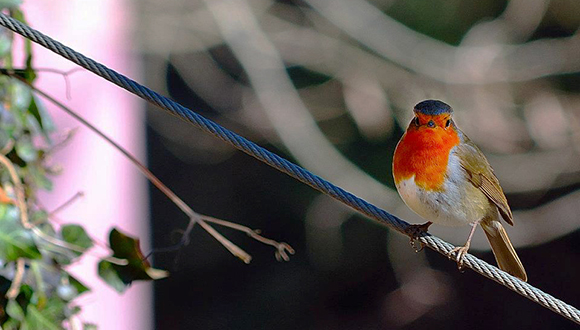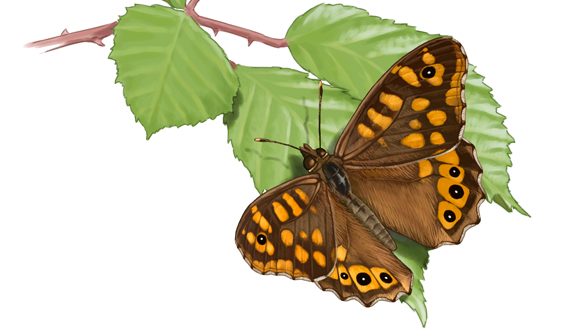Birds and butterflies are key indicators for the measurement of biodiversity loss
According to a study in which CREAF participated, the populations of birds or butterflies living in open habitats have been negatively affected by the loss of field and scrubland habitat. Conversely, species which live in forests have been favored. These variations were related with changes in the Catalonian (and Mediterranean) landscape over the last few decades.

Years ago, the landscape used to be dominated by fields. Sohowhas it changed? The abandonment of previous agricultural, forestry, and livestock practices over the past decades haschanged the Catalonian landscape. Many of the previously open spaces have now been transformed into forests or urban areas.
According to the study led by Sergi Herrando of the Catalonian Ornithology Institute (IOC), published in the journal Environmental Conservation, the progressive loss of open natural spaces such as scrublands or fields has had a negative effect on populations of birds and butterflies common to these habitats. One example is the southern grey shrike Laniusmeridionalis, a bird which is increasingly threatened with extinction in Catalonia, or the butterfly Erynnistages, which has suffered reductions in population approaching 90% over the last 20 years. Additionally, the Catalonian researchers leading the study observed that the changes in the landscape have favored species which live in forests or more closed habitats, including the robin Erithacus rubecula or the speckled wood butterfly Pararge aegeria. “These results alerts us that forest bird and butterfly species could be displacing species of open habitats,” says Lluís Brotons, researcher of CREAF and the Catalonia Forestry Technology Centre.

Over decades, thousands of volunteers have worked to track these animals
The study was undertaken in Catalonia where the IOC and the Granollers Museum of Natural Sciences have worked to monitor birds and butterflies. In the case of birds, the study utilized data gathered over 12 years in 300 itineraries throughout the territory, while in the case of the butterflies, data from 70 study plots over 20 years were analyzed. “The data obtained show us that the large scale and long-term butterfly and bird monitoring campaigns are a key tool for understanding the magnitude and consequences that envioronemtal changes have on biodiversity,” says ConstantíStefanescu, researcher from the Granollers Museum of Natural Sciencesand associated researcher of CREAF.

The two monitoring campaigns will continue thanks to hundreds of volunteers, and with each passing year it will be possible to see if the observed temporal changes continue in the same direction or change.
Participating in the study were researchers from CREAF, the Catalonian Ornithology Institute, the Catalonia Forestry Technology Centre, the Granollers Museum of Natural Sciences, and the Barcelona Museum of Natural Sciences.
More information: Monitoring of Common Birds in Catalonia (SOCC) and butterfly monitoring: Catalan Butterfly Monitoring Scheme (CBMS).







